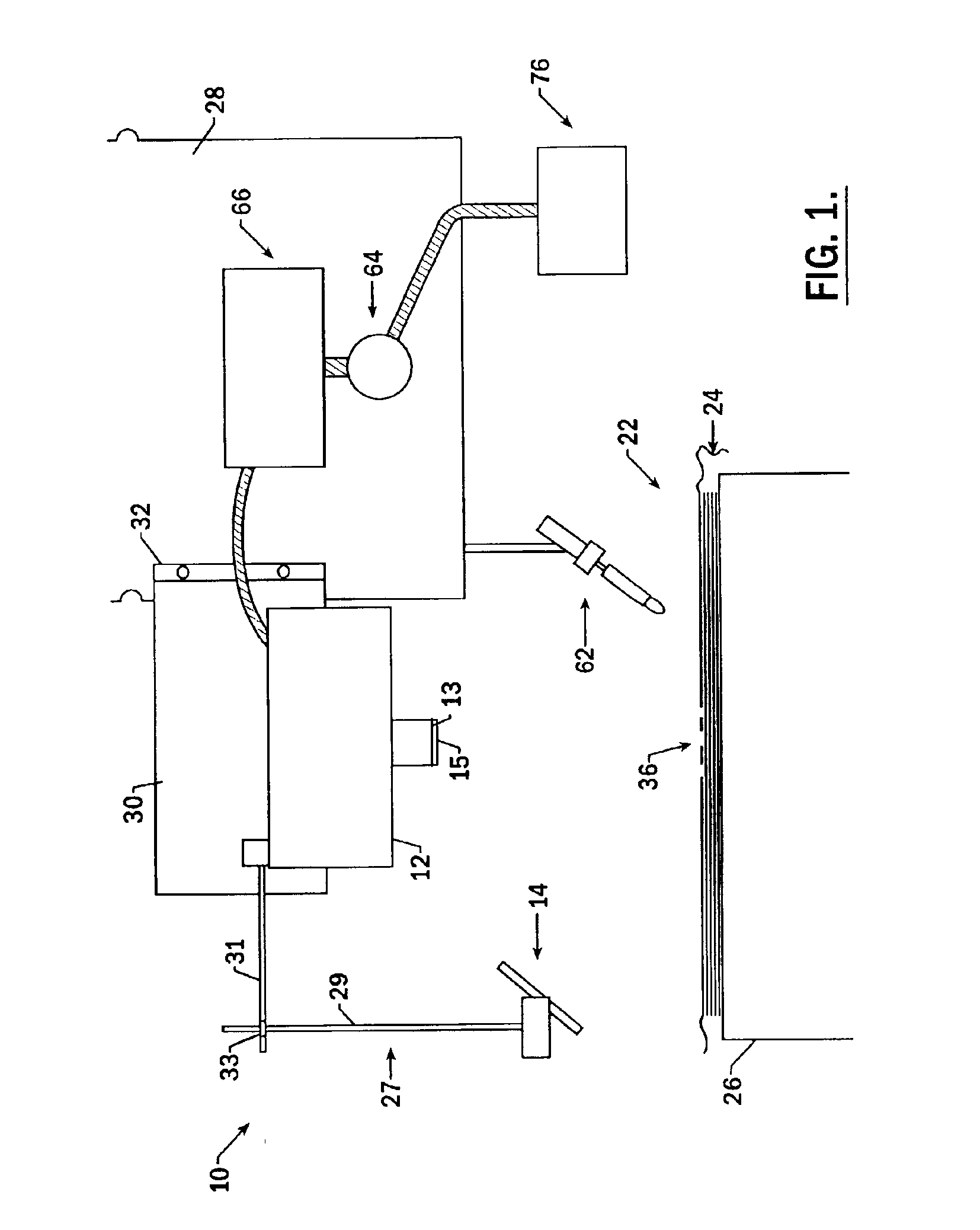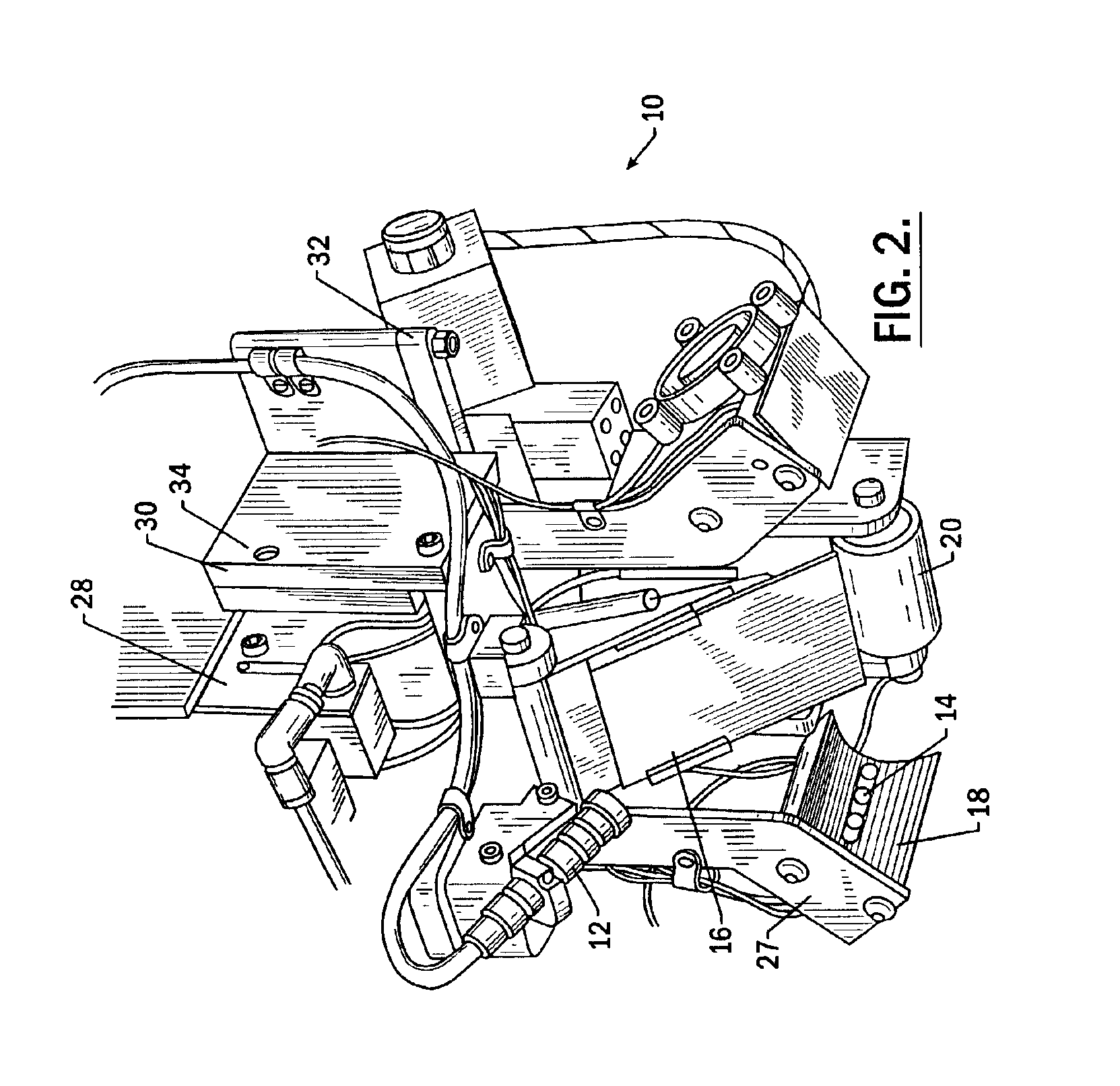System for identifying defects in a composite structure
a composite structure and defect detection technology, applied in the field of composite structure fabrication, can solve the problems of slowed manufacturing process, false readings in each system, and inability to accurately identify defects in the contour/curved regions of workpieces, so as to save time, labor and money, accurate identification of workpiece defects
- Summary
- Abstract
- Description
- Claims
- Application Information
AI Technical Summary
Benefits of technology
Problems solved by technology
Method used
Image
Examples
Embodiment Construction
The present invention now will be described more fully hereinafter with reference to the accompanying drawings, in which preferred embodiments of the invention are shown. This invention may, however, be embodied in many different forms and should not be construed as limited to the embodiments set forth herein; rather, these embodiments are provided so that this disclosure will be thorough and complete, and will fully convey the scope of the invention to those skilled in the art. Like numbers refer to like elements throughout.
Embodiments of the system for identifying defects in a composite structure according to the present invention are generally referred to as numeral 10 in FIGS. 1 and 2. As shown in FIG. 1, the system 10 is positioned proximate a composite structure 22, which is generally comprised of a plurality of adjacent tows or strips 24 of composite tape. The strips 24 typically include a plurality of fibers embedded in a resin or other material that becomes tacky or flowabl...
PUM
| Property | Measurement | Unit |
|---|---|---|
| Dispersion potential | aaaaa | aaaaa |
| Structure | aaaaa | aaaaa |
| Reflection | aaaaa | aaaaa |
Abstract
Description
Claims
Application Information
 Login to View More
Login to View More - R&D
- Intellectual Property
- Life Sciences
- Materials
- Tech Scout
- Unparalleled Data Quality
- Higher Quality Content
- 60% Fewer Hallucinations
Browse by: Latest US Patents, China's latest patents, Technical Efficacy Thesaurus, Application Domain, Technology Topic, Popular Technical Reports.
© 2025 PatSnap. All rights reserved.Legal|Privacy policy|Modern Slavery Act Transparency Statement|Sitemap|About US| Contact US: help@patsnap.com



